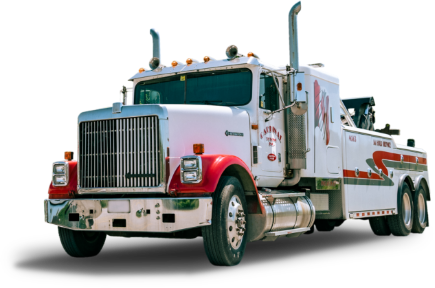Few things can turn a pleasant drive into a stressful roadside emergency faster than a burst radiator hose.
Your vehicle’s radiator hose is a critical component of the cooling system, and when it fails, it can lead to overheating, engine damage, and even a breakdown.
This article will guide you through the steps to take if your radiator hose bursts while driving, helping you stay safe and minimize potential damage.
Recognizing a Burst Radiator Hose
The first step in handling a burst radiator hose is recognizing the signs of failure. Here’s how to identify a burst radiator hose:
Steam and Vapor
One of the most noticeable signs of a burst radiator hose is steam or vapour escaping under the hood. If you see white smoke or steam billowing out from your engine compartment, it indicates something is wrong with the cooling system.
Temperature Warning Light
Modern vehicles are equipped with temperature warning lights on the dashboard. If your engine temperature rises rapidly and the warning light comes on, it’s a sign of potential cooling system trouble.
Engine Overheating
A burst radiator hose can cause your engine to overheat quickly. If you notice the temperature gauge in your vehicle’s dashboard rising into the red zone, it strongly indicates that your engine is running too hot.
Coolant Puddle
Inspect the ground under your vehicle when parked. If you see a puddle of bright green or orange coolant, it likely leaks from a burst hose.
Safely Pulling Over and Turning Off the Engine
If you suspect that your radiator hose has burst while driving, follow these steps to pull over and turn off the engine safely:
- Stay Calm: Keep a cool head and focus on safely getting your vehicle off the road.
- Turn on Hazard Lights: Activate your hazard lights to signal other drivers that you are experiencing a problem.
- Steer to the Shoulder: Gradually steer your vehicle to the right shoulder of the road. If you’re on a highway, aim for the nearest exit.
- Shift to Neutral or Park: If you’re driving an automatic transmission, shift to Neutral (N). For manual transmissions, disengage the clutch and coast to a stop. Do not abruptly brake, as it can worsen the situation.
- Turn Off the Engine: Once safely stopped, turn off the engine to prevent further overheating and potential engine damage.
Handling a Radiator Hose Repair on the Roadside
If you’re comfortable with basic car repairs and have the necessary tools, you can attempt a roadside repair of a burst radiator hose.
Here’s how:
Safety First
Before attempting any repair, give the engine time to cool down. Opening the hood immediately after turning off a hot engine can result in burns from escaping steam.
Gather Supplies
You’ll need a few items to perform a temporary hose repair:
- Duct tape or hose repair tape
- A knife or scissors to cut away damaged sections
- Coolant (water can work temporarily)
- A container to catch the coolant
Identify the Burst Hose
Locate the burst section of the radiator hose. This is often where the leak is most evident.
Cut and Replace
Using your knife or scissors, carefully cut away the damaged portion of the hose, creating clean, straight edges. Then, connect the two ends of the hose, bypassing the damaged section.
Secure with Tape
Wrap duct tape or hose repair tape tightly around the connection. This will provide a temporary seal to prevent coolant from leaking.
Refill Coolant
If you have access to coolant, top up the radiator. If not, water can be used temporarily, but replace it with coolant as soon as possible.
Check for Leaks
Start the engine and watch for any signs of coolant leakage. If the repair holds, you can cautiously continue to a repair shop or your destination.
Note: Keep in mind that this is a temporary solution. A professional repair or hose replacement is necessary for a long-term fix.
When to Seek Professional Assistance
While a temporary repair may get you to the nearest service station, it’s essential to understand when to seek professional assistance:
- Limited Supplies: If you don’t have the necessary tools or materials for a temporary repair.
- Uncertainty: If you’re uncomfortable performing the repair or unsure about your vehicle’s condition.
- Recurring Issues: If your vehicle has experienced multiple hose failures, it may indicate underlying problems that require professional diagnosis and repair.
- Long-Distance Travel: If you’re on a long road trip or far from the nearest service station, calling for a tow truck and having your vehicle inspected by a mechanic is safer.
Keeping Cool: Tips to Prevent Radiator Hose Failures
Preventing a burst radiator hose is always better than dealing with the aftermath. Here are some tips to help avoid hose radiator failures:
- Regular Maintenance: Follow your vehicle manufacturer’s recommended maintenance schedule, which often includes periodic cooling system inspections.
- Inspect Hoses: Routinely inspect radiator hoses for signs of wear, cracks, or deterioration. Replace them if you notice any issues.
- Coolant Levels: Check coolant levels regularly and top up as needed. Ensure that the coolant mixture is appropriate for your climate.
- Avoid Overheating: Keep an eye on your vehicle’s temperature gauge and address overheating issues promptly. Overheating can put excessive strain on hoses.
- Use Quality Coolant: Use a high-quality coolant recommended by your vehicle’s manufacturer. It contains additives that help prevent corrosion and maintain hose integrity.
- Proper Clamps: Ensure that hose clamps are tightened correctly. Loose clamps can lead to coolant leaks.
- Avoid Overloading: Don’t overload your vehicle. Extra weight can strain the cooling system.
In conclusion, a burst radiator hose can be challenging to handle while driving. Still, with the proper knowledge and a cool head, you can safely pull over, turn off the engine, and attempt a temporary repair if you’re comfortable.
However, seeking professional assistance is often the safest course of action.
Regular maintenance and preventative measures can go a long way in preventing radiator hose failures and keeping your vehicle’s cooling system in top shape.
Stay safe on the road, and remember that safety should always be your top priority when dealing with unexpected car issues.



